Chickens need to consume the required and recommended amount of nutrients for them to be able to grow healthy and strong. The essential nutrients a chicken needs include water, carbohydrates, proteins, etc. Therefore, they must consume the right amount of these things to grow appropriately. Here are the 10 High-Protein Foods for Chickens.
The Importance of Protein for Chickens
Why are proteins so crucial to chickens? Protein is not only essential to chickens but also to a wide variety of living things. Almost all animals need this nutrient in their life. Protein plays an essential role in the overall growth of animals.
They are responsible for building muscle, DNA replication, cell structure, and molecular and enzyme transportation that determines and helps in chemical reactions. Here are some of its key points of importance.
- Growth
- Egg production
- Adaptation to environment
Protein-Rich Sources For Chickens
| Food | Protein (per 100g) |
| Cooked Eggs | 13g |
| Mealworms | 47g |
| Earthworms | 21g |
| Meat | 26 |
| Bugs | 10g – 35g |
Protein is a necessity for chickens. Owners exert effort to ensure that their flock gets enough protein every day and does not lack any necessary nutrients for their growth. There are a lot of protein sources for your chickens. Here are some of them.
1. Eggs (Cooked)

Yes! Just as eggs provide protein for humans, it’s just the same for chickens too. It may be weird for some owners, but it is much up to your preference, as chickens eat eggs too.
Raw chicken eggs can potentially carry bacteria such as salmonella, harming the well-being of your chickens and other animals that may consume them. It is recommended to cook eggs before feeding them back to poultry for safety reasons and proper nutritional value.
2. Mealworms
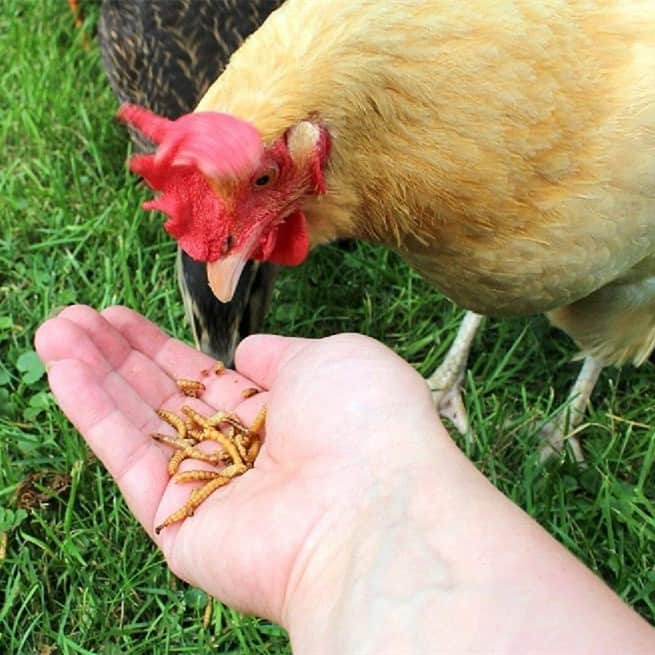
Mealworms can be bought in stores and farms. They are filled with good protein, and chickens love them! Given the proper knowledge and experience in raising such, you can also raise mealworms at home.
This way, you have easy access to mealworms. Dried mealworms are also filled with protein of up to 53%. Mealworms are flexible meals. You can mix them with other foods like oatmeal, their feed, and etcetera.
3. Earthworms
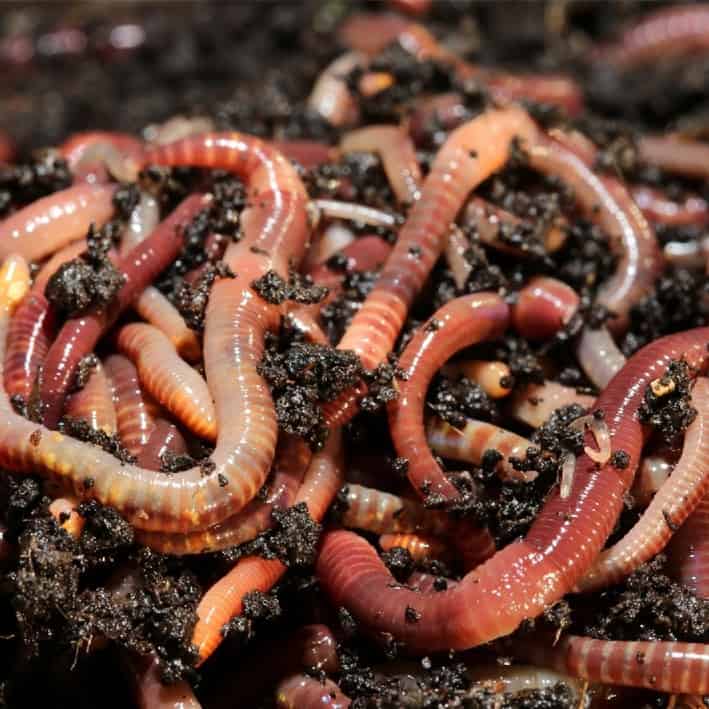
This protein source requires extra effort as you may have to look for earthworms yourself. It’s a good hobby that you can do after rain.
Earthworms are high in protein and rich in other nutrients such as amino acids, vitamins B12 and E, calcium, potassium, and magnesium, which makes them an excellent food supplement for chickens.
Chickens with access to the outdoors naturally consume insects, including earthworms, and their commercial diets. You should ensure that any worms you feed your flock come from areas free of pesticides or chemicals, so avoid using those gathered near roadside lawns or gardens treated with insecticides.
4. Meat

Meat is also a good source of protein, just like how it provides humans with this nutrient. Any meat is okay as long as appropriately prepared. They enjoy animal carcasses. You can prepare them sliced or just whole. Whatever style of preparation, as long as they don’t look too horrible for them, your flock would probably like it.
Meat can provide protein to chickens, despite them being omnivores rather than strict carnivores. Chickens primarily get their protein from plant-based sources such as soybeans, peas, and corn. However, meat by-products may be included in some commercial chicken feeds or used as a supplement for added calcium and phosphorus that is necessary for good bone health.
5. Bugs
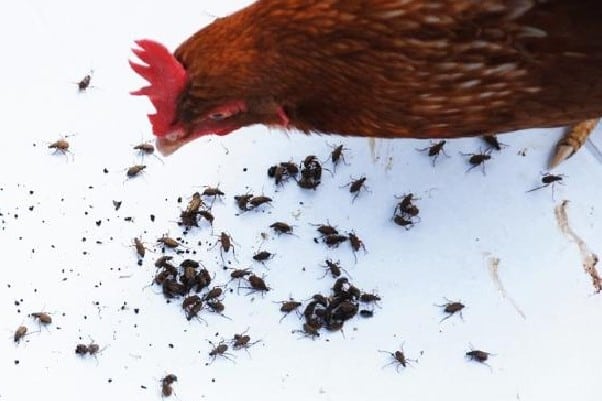
Chickens love bugs! Aside from this, bugs are very much available outdoors. Ticks are very common in chicken spaces, so when chickens are roaming, they can eat some ticks. Maggots are also a favorite for chickens, and they go hyper and crazy for maggots.
Foraging for bugs can also provide a nice exercise for your flock! This protein source is especially great for free-range chickens.
Plant-Based Protein Sources for Your Chicken
| Food | Protein (per 100g) |
| Peas | 5g |
| Oats | 11g |
| Lentils | 9g |
| Sunflower Seeds | 21g |
| Pumpkin Seeds | 19g |
Plant-based protein sources give your chickens mere protein and other nutrients such as vitamins A, C, etc. Plants also provide a lot of fiber that helps with your chicken’s digestion.
1. Peas

Peas are very convenient as they are cheap and they contain a good amount of protein. There are a lot of peas, but if you want to grow peas in your garden, make sure to grow garden peas.
Peas contain up to 5% protein. Peas are good, but serving organic and natural peas is better than processed and canned ones. Frozen peas are good to go as treats now and then, especially for the hot summer days.
2. Oats
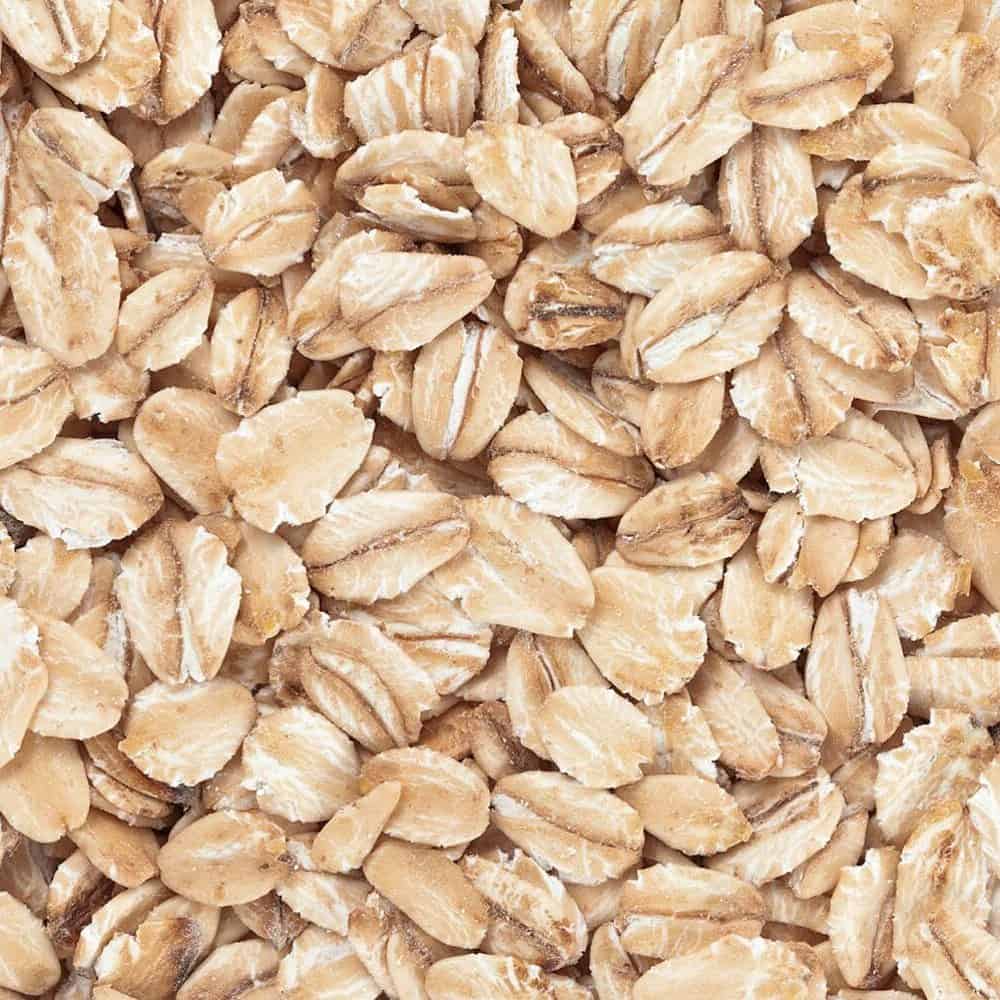
Oatmeal is a flexible meal with a good amount of protein and some extra stuff! You can add other ingredients like fruit bits and vegetables to the oatmeal you prepare. It allows chickens to have more than the offered nutrients of oatmeal in one meal. Oats contain about 11% protein., and it also contains fiber, calcium, and iron.
3. Lentils

Lentils are a good source of increased protein and are low in fat. Lentils contain about 9% protein. This choice is excellent because it’s both healthy and very cheap! Thus, you can buy them anytime and feed them to your flock.
4. Sunflower Seeds

Sunflower seeds contain 21% of protein. You can grow these plants to save money. These seeds also contain more nutrients that help in fighting off diseases.
Chickens require dietary protein to support the growth, maintenance, and repair of tissues in their bodies and egg production. The amount required can vary depending on factors like age, and breeder flock. It’s always best practice to review current nutrient requirements available through your feed supplier or talk with local poultry experts. Sunflower seed’s nutritional profile makes it easy addition.
5. Pumpkin Seeds

Pumpkin seeds are loved not only by humans but also by your chickens. These seeds contain 19% protein. In most stores, pumpkin seeds are pretty expensive, so these snacks are primarily available during Halloween when pumpkins are in season, and people are carving them up.
Their taste and preference may change as they grow up, so giving them more options is good. They love tasting food so they can expand their taste buds and explore more things. Having diversity in their meals also gives them more nutrients and balances their diet in a way.
Risks of Too Much Protein
While protein helps chickens grow healthier and adequately, it’s important to note that there are limitations even with foods that supply this nutrient. Chickens require a certain amount of nutrients to survive every day. Going overboard is terrible for their health; in the same way, the lack of these nutrients also affects them negatively.
It’s important to note some things before feeding your chickens protein-rich food. The levels of protein needed are always different as they grow. Growing chicks need an additional amount of protein intake than those that are older.
In short, you need to curate the level of protein you feed them based on their age and activity level. Too much protein can cause your chickens to have wetter litter, blistered feet, looser bowels, etc. Too much of this nutrient can also increase ammonia production, resulting in more severe issues like respiratory damage.
Molting in Chickens
Molting is a pretty necessary process in chickens. This is where chickens start to lose their feathers and replace them with new ones. Molting is like a natural process of replacing their feathers with newer and stronger ones. To be able to rebuild new, stronger, and more beautiful plumage, they need enough protein intake.
Molting usually occurs during the late summer or fall. It usually starts and happens during the days when the daylights are shorter. There is no specific time frame as to how many months it occurs to chickens. Factors like breed, genetic makeup, and overall health status are significant factors that influence the span of the molting season.
Chickens undergoing their molting season are preparing their bodies for the upcoming winter season. Their bodies are just making sure that they are capable enough to keep their bodies warm during the colder temperatures set in.
The growing of new stuff makes their feathers look a little thin or, at times, even wholly bald. This process is critical for them, as they might also be susceptible to health issues, including infestation.
During these times, owners need to do things that may help them reduce their stress levels or avoid any stressor at all. Protein is a crucial element during these times as feathers are made majorly of protein (80-90%).
Molting even slows down or stops the egg-laying process of egg-laying chickens. These are the times when you are very much welcome to treat your chickens to a high-protein snack now and then. There is a balanced and recommended protein intake every day for chickens. However, there are times when they need an extra boost of protein, especially during their molting season.
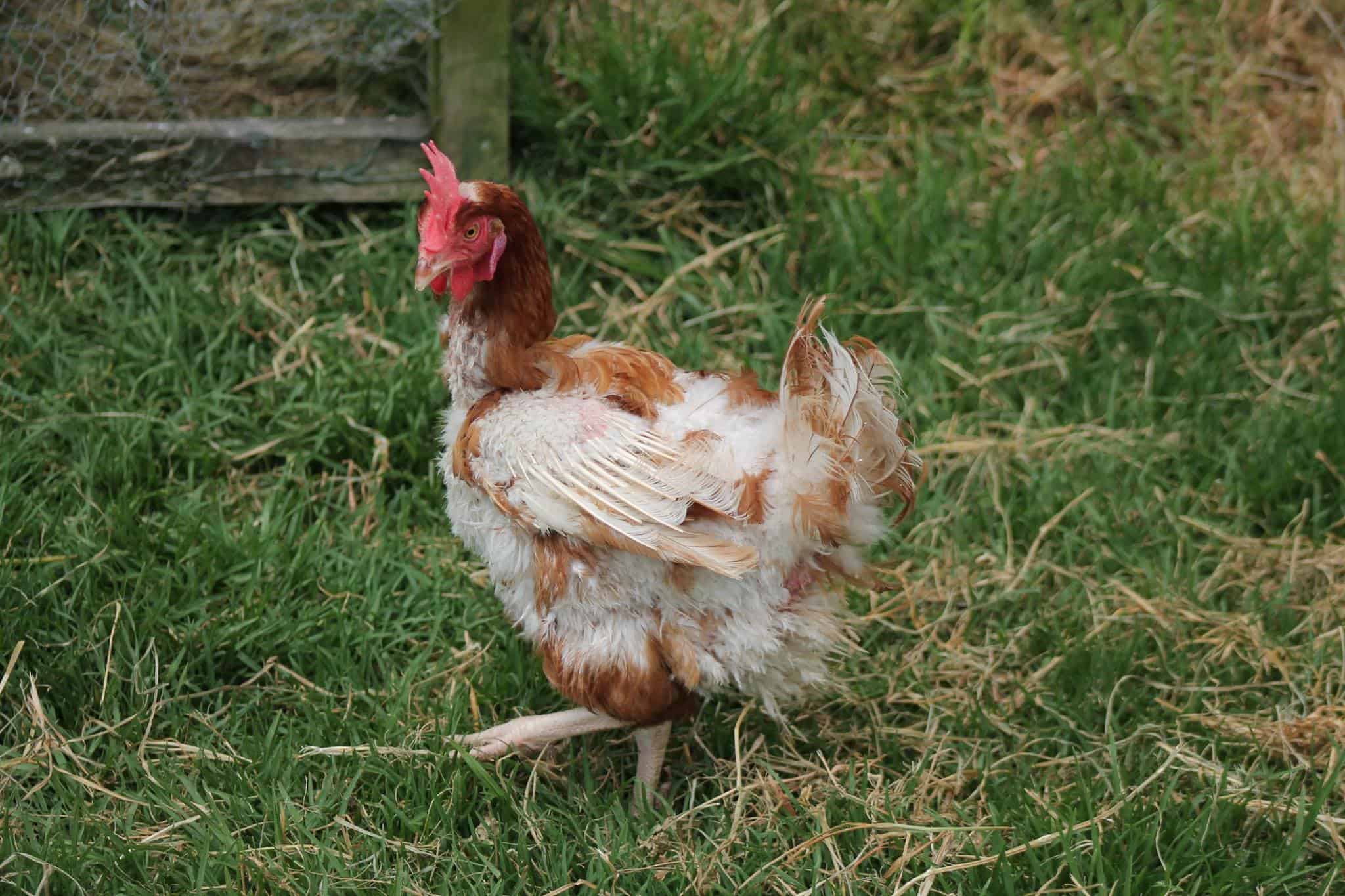
High Protein Snacks For Your Chicken During Molting Season
Molting season is one of the times when your chickens need a protein boost. When this process starts, it’s important to note that they will need food that has high protein levels and high nutrition foods. Here are some of the typical molting season snacks for your chickens.
- Eggs– It’s always easy to whip up scrambled eggs in the morning. Perhaps, you can make some for your chickens too. They love these kinds of food and are very easy to eat, given the texture of eggs. Just make sure that it’s not raw eggs to avoid the tendency of chickens to eat their own eggs.
- Chicken– Like how chickens provide protein to humans, chickens are also good protein sources for chickens. It’s delicious! However, chicken food can be pretty pricey as it’s not usually the first choice when it comes to snacks. Thus, if you have some leftover cooked chicken and would want your flock to try some, do not hesitate.
- Shellfish– Yes, chickens are into seafood too! Shellfishes are good sources of proteins for the flock. Most of the time, it’s almost impossible to clean up the meat from shellfish. Therefore, most often than not, when they peck on the shells, they also get both the flavor and some meat.
Summary
Protein is an integral part of a chicken’s diet. In fact, it goes up to the top as one of the basic and most important ones. Knowing 10 High protein foods for chickens helps in expanding your flock’s menu. It’s a win-win for both as they get more nutrients, and you have fun preparing their meals.

Joseph Hudson has been raising chickens for over 15 years. In 2018, he completed the Agriculture & Natural Resources program at Mt. San Antonio College. He currently raises over 1400 chickens on his 7.5-hectare farm. He keeps sharing his experience on raising healthy and happy chickens on Chicken Scratch The Foundry.
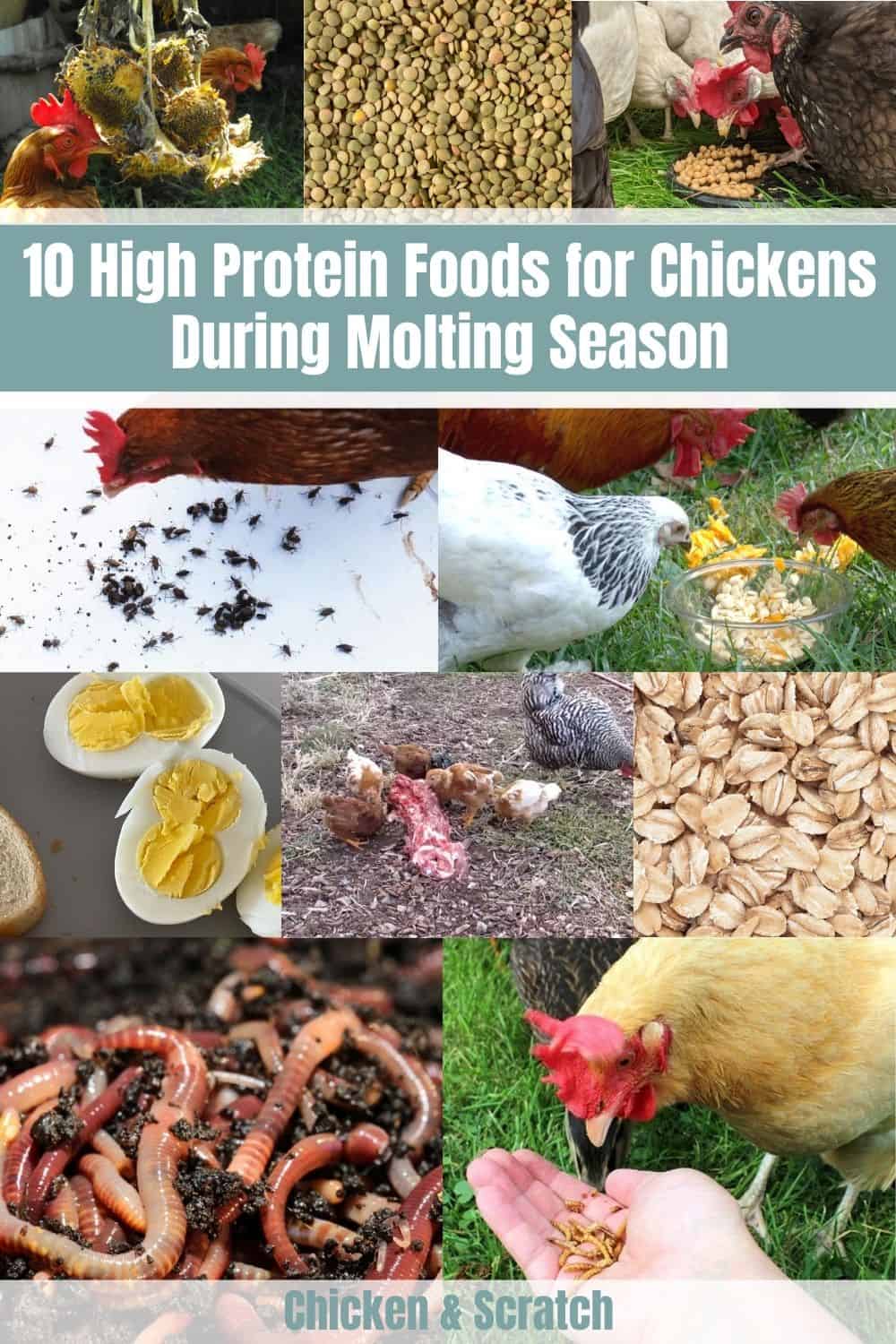
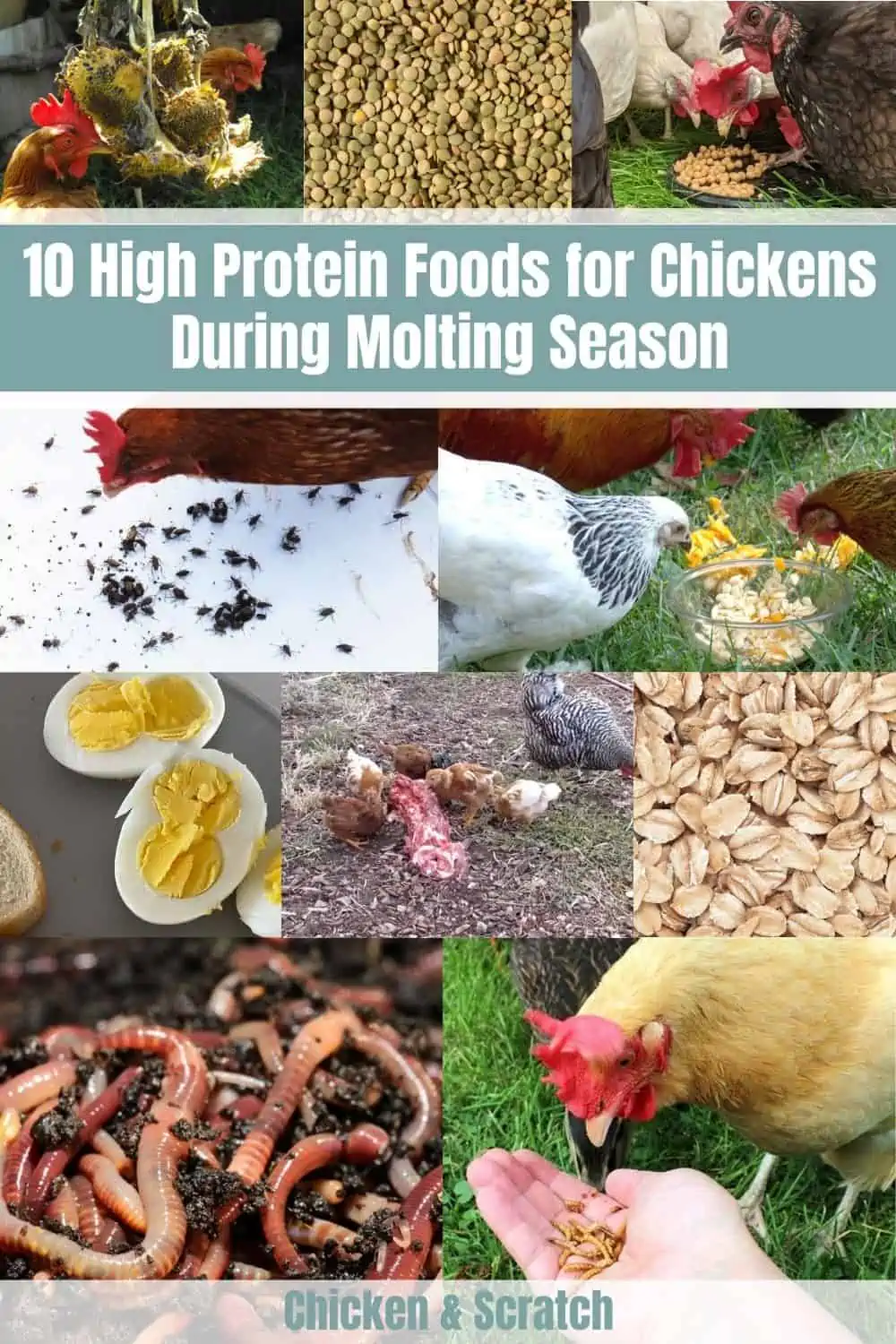







My chicken, Isobel, 5 years old, gets all the above protein foods, except lentils. Also, lots of lettuce and some fruit among other foods. I sometimes add apple cider vinegar to her water. However, she has a serious molting problem. Last year she lost nearly all her feathers (July, august in NZ) and I had to keep her inside until most of them had regrown. She enjoys her freedom outside and nests in a trellis/basket, vines. Which is totally her choice of habitat. I guess it’s not easy for predators to get up too. But she has no companions of her own (accept our cat) and thinks she’s human mostly. Comes inside during the day and sometimes asks to be picked up. It is nearly March and she has lost all her tummy feathers and is not keen to be picked up. her eggs are getting less. I thought she might be getting too much protein, now I’m not sure. She isn’t drinking water, I don’t think. Her crown is kind of shrunk and dry looking. I’m thinking I might have to bring her inside each night….but….
Thank you for reading our article. Lossing feathers is a troublesome issue, I’ve encountered myself. Hopefully, this article can provide you with some helpful tips.